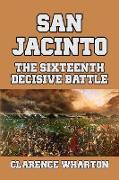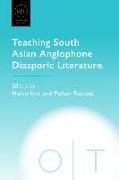San Jacinto
BücherAngebote / Angebote:
Drawing upon Sir Edward Shepherd Creasy's Fifteen Decisive Battles of the World, Texas historian Clarence Wharton defined the 1836 Battle of San Jacinto-when Mexican Emperor Santa Anna and his army were driven out of that huge southern region-as the sixteenth most decisive battle in world history.Set against the backdrop of the defense of the Alamo by William Travis, and the subsequent Mexican massacre of American prisoners at Goliad, this work tells the story of the forty fateful days between the retreat from Gonzales and the epic battle at Lynchburg, now called San Jacinto.Wharton points out that Creasy's stipulations for a "decisive battle" as those in which a contrary result "would have essentially varied the drama of the world."As the author points out, had "the Mexican Commander consolidated his forces, the battle of San Jacinto could not have been won by the Patriot Army. Had he carefully selected his camp site and kept a diligent watch, the thin line of seven hundred and twenty odd infantry which surprised his camp in the mid-afternoon could not have reached the crest of the hill. "Had he won, the Texas settlements would have been wiped out and Mexican supremacy would have been re-established north and east of the Rio Grande. The Anti-Slavery sentiment in the northern States was so opposed to the acquisition of more territory in which the spread of slavery was feared, that these States would have been allies of Mexico against further Southern aggression."Twenty years later we were in the throes of our Civil War and European statesmen were against our further western expansion. The vast territory won at San Jacinto and the still vaster area won by the Mexican War which followed as a proximate result, was an empire in domain which might have remained Mexican or passed to European countries. A million square miles, including the present States of Texas, New Mexico, Arizona, California, Nevada, Utah and portions of Wyoming, Colorado, Kansas, and Oklahoma, were won at San Jacinto on April 21, 1836."The acquisition of this vast domain and the extension of our frontiers to the Pacific was a major event in human history, and a contrary result which would have left this great terrain under a foreign flag would have varied the drama of the world." This new edition has been completely reset, and contains the entire text and all 41 illustrations-including three maps-which were included in the original work. It also has, for the first time, a complete index. About the author: Clarence Ray Wharton (1873-1941). A prominent Texan lawyer, Wharton's interest in local history prompted him to become a writer. In addition to many articles, his published works included The Republic of Texas (1922), El Presidente (1924), History of Texas (1935), History of Fort Bend County (1939), Satanta, the Great Chief of the Kiowas and His People (1935), L'Archeveque (1941), and Gail Borden, Pioneer (1941). In 1930 he wrote and edited a five-volume Texas history, Texas under Many Flags. Wharton was the first chairman of the Houston Community Chest and was prominent in the American Red Cross during World War I. He was an active member of the Harris County Historical Society, of which he was vice president in 1923.
Folgt in ca. 15 Arbeitstagen




